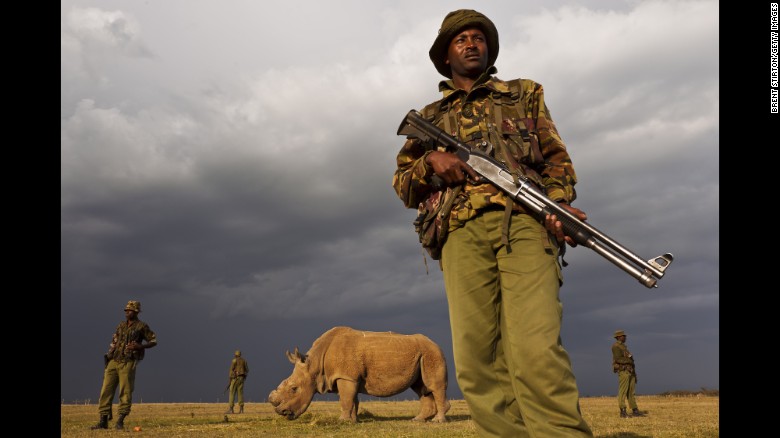There is only one male northern white rhino left in the world.
His name is Sudan, he’s 42-years old — practically geriatric in rhino terms. His sperm count is low and his hind legs are weak — meaning he’s in no position to mate.
What this also means is that his species is on the brink of extinction. Or is it?
Scientists are desperate to save the species, which over the years have fallen victim to aggressive poaching (rhino horns fetch around $60,000 per pound — more than gold, diamonds or cocaine). They are currently testing out several new methods to save Sudan’s kind — some of which sound positively science fiction.
Sudan lives at the Ol Pejeta Conservancy in central Kenya, where he is under 24/7 armed guard. There, a project is underway to extract his semen to create test tube embryos that could one day save his species.
“What we are doing is we are saving genetic traits, which will allow rhinos, perhaps in 100 or 200 years time, to be reintroduced back into areas where these animals used to exist,” says Richard Vigne, Ol Pejeta’s CEO.
The resultant embryos will impregnate some of the last surviving females of a different but closely related species: the southern white rhinos, which live at Dvur Kralove Zoo in the Czech Republic.

